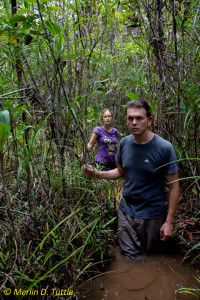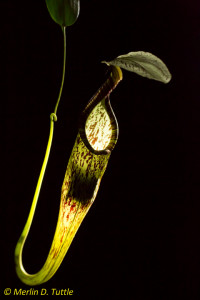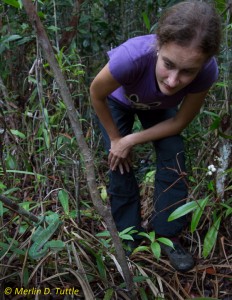Discovering a Passion for Bats: Internships at Kasanka National Park
Bats are among the most fascinating yet misunderstood creatures in the natural world, and for many conservationists, a single experience can ignite a lifelong passion
Merlin and I arrived in the capital city of Brunei, Bandar seri Begawan, on August 10th with only four of our five checked bags of 350 pounds of gear and equipment. Caroline and Michael Schöner, our hosts, met us at the airport to take us to the house they had been renting on the Labi Forest Road, a two-hour drive from the capital on the coast to the interior of Brunei. They had additional bad news. The local pet store was out of mealworms needed to feed the bats we intended to photograph in our sudio, and it would be five days till more arrived. That was also how long it took for our missing luggage containing essential tripods and flash stands to materialize. Finally, even when everything did arrive, the electricity failed, preventing us from using fans for cooling. Our small, tin-roofed cottage got so hot that we barely survived, though all of our newly purchased mealworms, kept in the same room with us, died. Another long drive to the capital was required to purchase more, further delaying us from keeping bats in our studio.


While waiting for the luggage, the Schöners took us to a peat swamp, one of their primary sites for studying pitcher plants (Nepenthes hemsleyana) that have developed a taste for bat guano. If the light is just right, you can sometimes see silhouettes of the tiny Hardwicke’s Woolly Bats (Kerivoula hardwickii) roosting in the pitchers. This is quite remarkable, considering that most pitcher plant species capture and eat anything that enters, ranging from insects to rats. We had to wade knee deep, sometimes passing close to abundant Bornean Green Keeled Pit Vipers (Tropidolaemus wagleri) beautifully colorful but highly venomous snakes that often perch on limbs and vines along the trails. The Schöners quickly pointed out two of them, warning us to be careful. Merlin could not resist getting as close as possible to one to photograph, making me a tad nervous.

Caroline and Michael led us around the swamp for a couple of hours before they found a pitcher containing a bat. In the meantime, Merlin photographically documented their fascinating research. They had discovered a variety of adaptations these plants have evolved, apparently to accommodate bats specifically. Expanded lids protect against rain. Specially shaped entrances reflect bat echolocation. A conveniently constricted area comfortably supports roosting bats and unusually low water levels inside help bats stay dry.
Despite a challenging start, the next blog will illustrate the highly successful results and how they were made possible.
Love our content? Support us by sharing it!
Bats are among the most fascinating yet misunderstood creatures in the natural world, and for many conservationists, a single experience can ignite a lifelong passion
Merlin and MTBC team members spent 19 days in Costa Rica last November on a filming trip for “Bat City” with its Director and Emmy
Bats can use sounds in many complex ways. They can sing and even have different dialects… When imagining a bat, the first thoughts that come
Thanks to all the Join the Nightlife: Bats and Agriculture attendees who joined us out in the field this year! Guests got hands-on experience with
2024 © Merlin Tuttle’s Bat Conservation. All rights reserved.
Madelline Mathis has a degree in environmental studies from Rollins College and a passion for wildlife conservation. She is an outstanding nature photographer who has worked extensively with Merlin and other MTBC staff studying and photographing bats in Mozambique, Cuba, Costa Rica, and Texas. Following college graduation, she was employed as an environmental specialist for the Florida Department of Environmental Protection. She subsequently founded the Florida chapter of the International DarkSky Association and currently serves on the board of DarkSky Texas. She also serves on the board of Houston Wilderness and was appointed to the Austin Water Resource Community Planning Task Force.
Michael Lazari Karapetian has over twenty years of investment management experience. He has a degree in business management, is a certified NBA agent, and gained early experience as a money manager for the Bank of America where he established model portfolios for high-net-worth clients. In 2003 he founded Lazari Capital Management, Inc. and Lazari Asset Management, Inc. He is President and CIO of both and manages over a half a billion in assets. In his personal time he champions philanthropic causes. He serves on the board of Moravian College and has a strong affinity for wildlife, both funding and volunteering on behalf of endangered species.